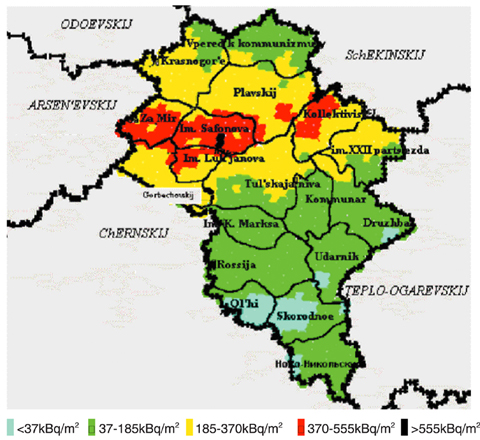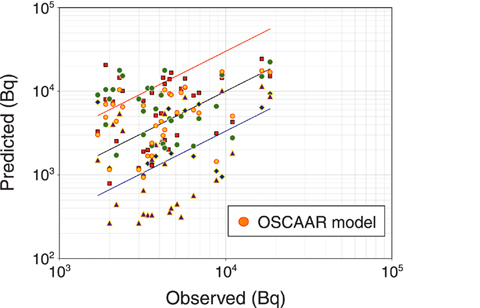
Fig.5-2 Soil contamination of 137Cs in the Plavsk region

Fig.5-3 131I contents in thyroid of residents in the Plavsk region
Various kinds of mathematical models are used to assess the transport of radionuclides in the environment and to predict the potential pathways and levels of human exposure to the radionuclides. These models are used primarily to estimate the consequences to the public and the environment in which complete sets of measurements cannot be obtained: safety analysis of routine operations and accident situations of nuclear installations in a regulatory process, or dose reconstruction from past releases of radionuclides. When decisions on safety or acceptable levels of contamination for regulatory purposes are based on model results, it is essential to establish a degree of confidence in these results for the sake of scientific and public credibility.
In this regard, JAEA is conducting the research on validation of transport models of radionuclides in the environment using field measurements of various kinds of exposure situations, environmental media, and radionuclides through participation in international exercises aimed at the testing and validation of such models which have been conducted since the Swedish sponsored BIOMOVS program started in 1986.
In the BIOMASS and EMRAS programs organized by IAEA, particular attention was given to 131I and 137Cs which are important radionuclides for environmental assessment that are products of operation of nuclear power plants and fuel cycle facilities. We have tested the predictive capabilities of biosphere transport and exposure models in the OSCAAR computer code developed by JAEA for the probabilistic safety assessment of nuclear installations. Examples of model predictions compared with observed data are shown in Figs.5-2 and 5-3 for a test in which the transport models of radionuclides from air to plants, pasture to animal products and the metabolic model of radioiodine in human body were validated using observed data of 131I and 137Cs in media of the environment such as air, soil, plants and animals. Such exercises provided good opportunities for testing the predictive capabilities of models, evaluating the uncertainty in models and parameters, and improving the credibility of environmental assessment models.